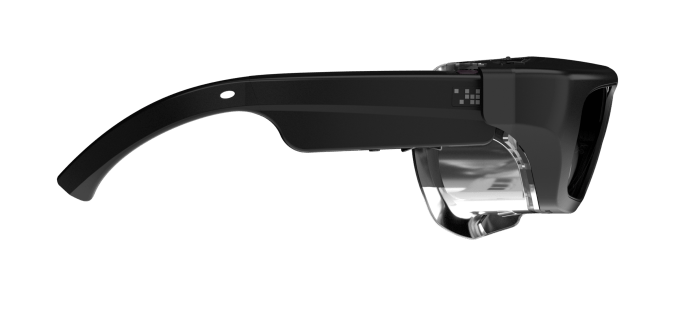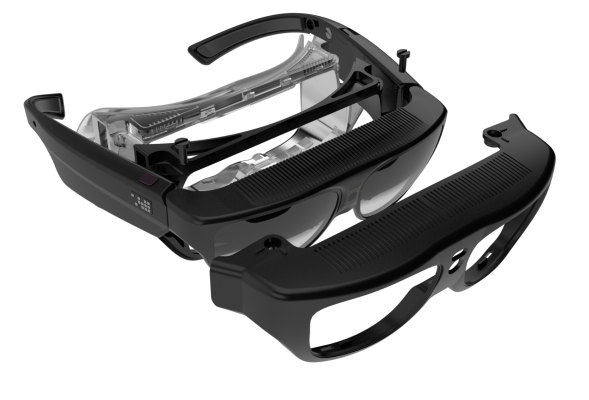ODG may already be surfacing its ambitions to put smart glasses on consumers’ faces, but the company has not forgotten about the specific and highly unique needs of its enterprise customers.
Today, the augmented reality company unveiled a model of its glasses optimized specifically for business customers who need a more advanced level of protective eyewear. The R-7HL (The HL stands for Hazardous Location) are designed for those workers whose environments are a bit more on the extreme side; ODG specifically details “oil exploration and production, energy, mining, utilities, chemical production and pharmaceuticals” as some of the industries for which the new headset is optimized.
The new device is based on the architecture of the company’s current-gen R-7, but much of it had to be redesigned to reach the level of ruggedness that ODG’s partners needed. The company tells me that about 50 percent of its existing client base are in industries that this new headset would best serve.

At CES, ODG pulled back the curtain on a couple of its next-generation flagship products, the R-8 and R-9, but because of the existing supply chain, the company tells me it just made a lot more sense to get the rugged version of the R-7 sooner rather than to wait until production on the enterprise-focused R-9 could be ramped-up. ODG has had a tough time keeping up with demand for its R-7 product, which has been back-ordered since launch.
The company, which was at one point in talks to be acquired by Microsoft in 2014 but ended up selling them $150 million in patents, has a busy year lined up for itself. The company hopes to launch the enterprise-focused R-7HL and R-9 headsets in Q2 of this year while releasing its prosumer product, the R-8, sometime in the second-half of the year.
In December, the company raised its first round of outside funding, nabbing $58 million in a Series A round led by 21st Century Fox.
While so many companies like Microsoft, Magic Leap, Meta and more are building “mixed reality” devices that actively map the spaces of the rooms they are in, ODG’s products launching this year are a bit more straightforward, serving as hands-free, heads-up displays that can be accessed easily and offer the utility of an Android tablet, albeit one overlaying the real world. ODG is working on building models that actively map the geometry of the rooms they are in, and has brought limited positional tracking to its newer models thanks to the latest Snapdragon 835 that both devices run on.
Unlike many of the other companies that garner headlines in the space, ODG has been shipping augmented reality glasses for years to real customers who are already seeing the utility of bringing AR into the work place.
The R-7HL will begin shipping by the end of the second quarter of 2017 and will sell for $3,500.
